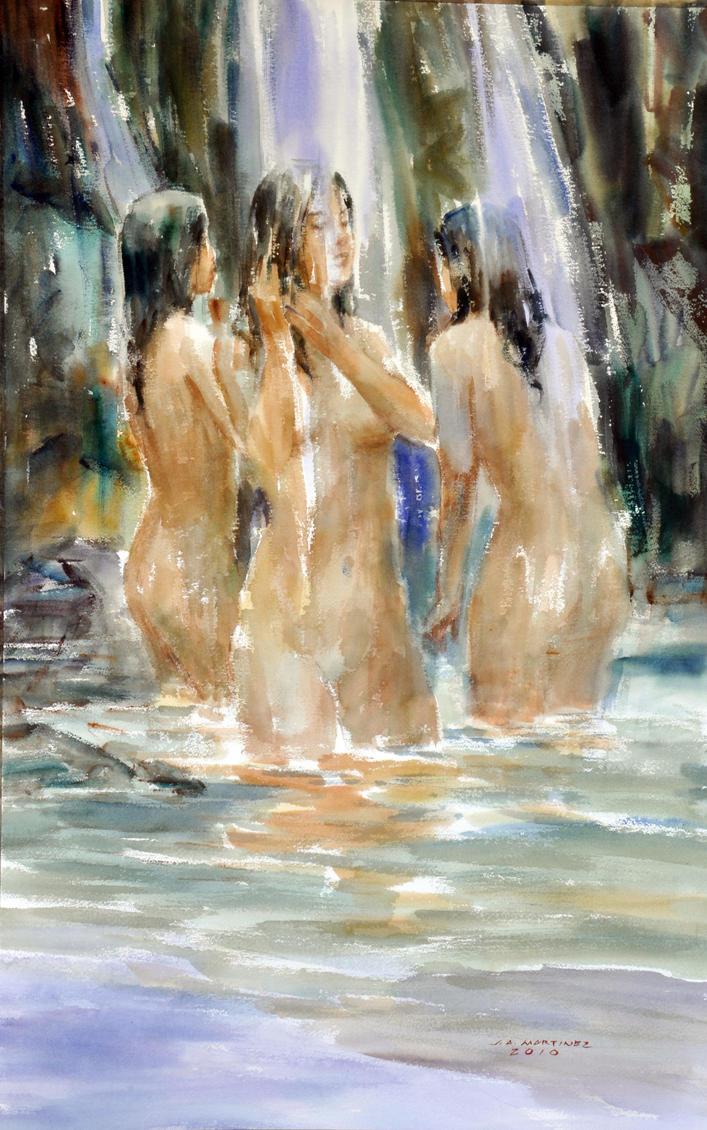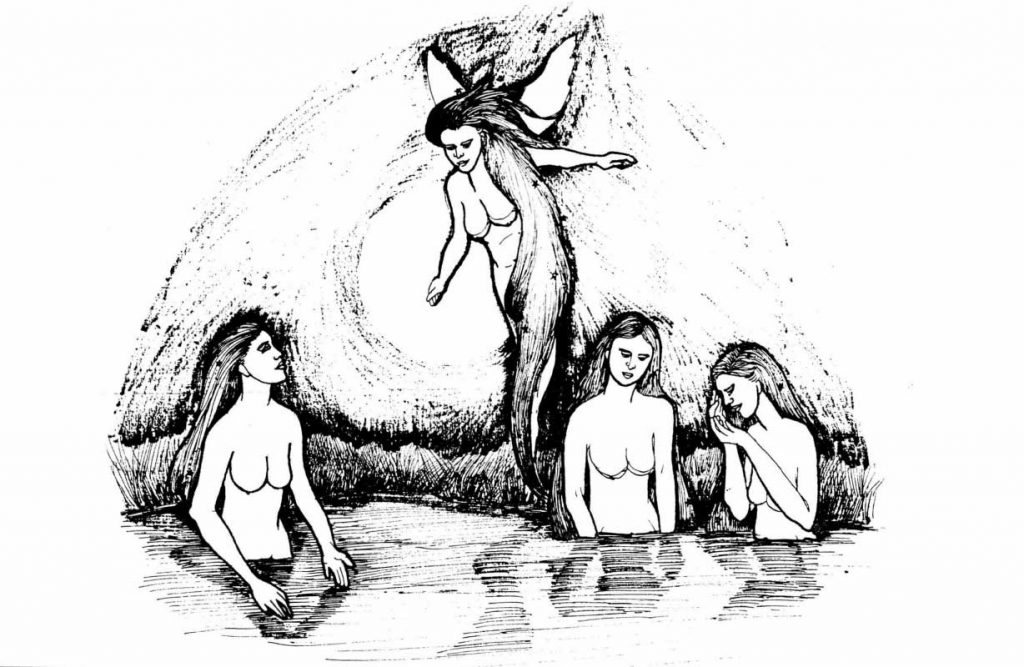Over the past decade, ancient DNA research has revealed some surprising aspects to our evolutionary history during the past 50,000 years. Perhaps the most startling of these has been the extent to which the ancestors of living people across the planet interbred with other closely related species of human. There’s no doubt that different groups of people can look very different from one another. Some genes are involved in observable characteristic differences, and some are involved in musculature-related phenomena. Many people focus on these, ignoring the vast majority of genes whose differences are insignificant. As migration increases around the Philippines, and the world, features that might previously have allowed our eyes to classify people will undoubtedly become blurred. Then the small fraction of DNA differences that differ between populations will become even smaller. In the ancient Philippines, these DNA differences were explained by myth and folklore. Two such stories from the Ibaloi people of the Northern Philippines involve Star Maidens who came from the sky.
The motif of interbreeding is not uncommon in folklore around the world. Zeus and the other Olympians were constantly and permanently knocking up princesses, queens, nymphs, sirens, lesser goddesses, warrior women and just plain fair maidens who bathed in the pool with their handmaidens. And the handmaidens, too, sometimes. Philippine myth & folklore also carries similar themes (See: Bathala’s Daughters: The Demigods Mayari, Hanan & Tala) and it is not always the deities or mythical maidens doing the seducing.
The Ibaloi are an indigenous ethnic group found in the northern Philippines. Ibaloi is derived from I, a prefix signifying “pertaining to” and baloy or house meaning “people who live in houses”. The variants are ibaloy, inibaloy, and nabaloi. The Ibaloi are one of the indigenous peoples collectively known as Igorot, who live in northern part of Luzon, particularly in the mountains of the Cordillera and neighboring provinces.
Origin Of Fair Hair and Fair Complexion
THERE ONCE LIVED a man who owned a large field of gabi. In the middle of the field was a little clearing, through which ran a sparkling stream. Every night, unknown to this man, the Stars would descend to earth in the form of lovely maidens to bathe in the stream. The Stars were beautiful women with pale skin, shiny, fair hair and lustrous eyes. They each had a pair of wings that enabled them to fly down from the Night sky and back again, before the morning Sun chased them away.
Each morning, the man would visit his field and wonder why the gabi plants nearest the stream looked trampled upon. One night, he decided to keep watch. Towards midnight, the Starsisters came down for their nightly bath. Their long hair shone in the moonlight and they lifted their white arms to the cool breezes. The man watched, fascinated. They were beautiful indeed! He could hear them laughing, and to his ears their voices were like bells. The Star maidens took off their wings and draped them on the stalks of gabi near the stream. Then, running, they plunged into the cool waters and swam with graceful strokes.

The night wore on. As Dawn approached, the Stars rose from the water and walked through the gabi plants to retrieve their wings. The man, propelled by sudden impulse, reached out for a pair of wings and hid them under a bush. The Stars made ready to leave for heaven. One of the younger ones called out to her sisters that she could not find her wings. They helped her look for them but could not find her wings. “Hurry, hurry,” they said, “Morning is near and we must not be caught here!” When nothing turned up despite their efforts, they told their sister, ”We have no choice; we must leave you here. Look for a hiding place, and we will try to come back for you as soon as we can.” Then with a great rustling of wings, they were gone, turned into faint glimmers in the now lightening sky.
The Star-maiden that had been left behind wandered slowly through the gabi field , lonely and afraid. The landscape was all new to her, and she was unfamiliar with the creatures of earth. The man came out of his hiding place and approached the Star maiden. “Do not be afraid, I have no wish to harm you,” he said. “I own this field, and the stream that you and your sisters like so much to bathe in. Come home with me to rest. I can give you food and a place to sleep, and you will be safe from curious eyes there.” The man seemed kind, and the Star-maiden followed him home since she had no way of flying back to the sky without her wings.
In time, the Star-maiden became the farmer’s wife, and she grew to love her husband and learn the ways of earth. They had many children, most of whom had her fair hair and skin. Did she miss her sister stars? Perhaps she did, and looking out into the night sky, she sometimes wondered what ever happened to her wings that night, so long ago it now seemed like a dream, when she and her sisters bathed by moonlight in an earthly stream.
The Star Wives
MANY GENERATIONS AGO, the stars would come down from the sky to bathe in the brook of Batan. The brook was cool and lovely, and on its bank wild flowe rs and soft grasses grew. Beyond were the gabi fields of the people of Batan.
Each morning, the women of Batan would go to tend their gabi fields. And each morning, in consternation, they would find the tops of their gabi plants near the brook all broken and crushed.
Nobody could explain it. The women asked the hog: “Did you destroy our gabi tops?”
But the hog answered, “No, but perhaps the dog did it.”
They asked the dog, “Did you destroy our pising leaves?”
But the dog said, “No, no, it was not I. But you should ask the monkey.”
The monkey told them, “It was not I who destroyed your gabi tops; but this I know: tell your husbands to hide near the water tonight so you will learn who did it.”
That night, the men of Batan hid in the long grass by the brook, waiting with spears and hunting knives. At midnight, to their amazement, they saw many stars come down from the sky.
The little clearing near the brook was bathed in lustrous light, and the men could not believe what they were seeing. The Stars were changing into beautiful, fair-skinned women, and they began to take off their bright wings and clothing. The Stars hung their wings on the tops of the gabi plants. Then, stepping daintily into the water, they bathed and frolicked until the dawn sky warned that morning was near.

The men of Batan marveled at their beauty, and each one desired one of the Star Maidens as his wife. They had forgotten their lives in the village, including the wives they were already married to. Bewitched, and sorely dazzled, they crept up to the brook and hid the stars’ wings in a jar which they later kept locked up in a room.
The Star Maidens could not return to the sky, and the men of Batan forced them into marriage, first divorcing their mortal wives. The women of Batan were distressed and angry. Many went away to live in other villages, and some were so heartbroken that they killed themselves.
For many years, the Star Maidens were unable to get their wings and clothing back from the men; each time they approached the barred room, the men would overpower them and push them away.
As the years passed, the men of Batan grew older and more feeble. But the Stars, who were immortal, remained young and strong and lovely as ever. It was then that the Stars retrieved their clothing and their wings, and returned to their own sky-world. They left behind in Batan many children who are the ancestors of some of us today.
SOURCE: “The Star Wives” is tale number 26 in “Nabaloi Tales,” a compilation of 117 stories by Claude Russell Moss, published by the University of California Press as Volume 17 of the University of California Publications in American Archaeology and Ethnology. Bothe tales below have been retold in Cordillera Tales by Maria Luisa B. Aguilar-Carino
ALSO READ: Stars Through the Eyes of Ancient Filipinos
Jordan Clark is a Canadian born descendant of Scottish immigrants living on the homelands of the Lekwungen speaking peoples. His interest in Philippine myth and folklore began in 2004. Finding it difficult to track down resources on the topic, he founded The Aswang Project in 2006. Shortly after, he embarked on a 5 year journey, along with producing partner Cheryl Anne del Rosario, to make the 2011 feature length documentary THE ASWANG PHENOMENON – an exploration of the aswang myth and its effects on Philippine society. In 2015 he directed “The Creatures of Philippine Mythology” web-series, which features 3 folkloric beings from the Philippines – the TIKBALANG, KAPRE and BAKUNAWA. Episodes are available to watch on YouTube. Jordan recently oversaw the editing for the English language release of Ferdinand Blumentritt’s DICCIONARIO MITOLÓGICO DE FILIPINAS (Dictionary of Philippine Mythology) and is working on two more releases with fellow creators scheduled for release later this year. When his nose isn’t in a book, he spends time with his amazing Filipina wife of 20 years and their smart and wonderful teenaged daughter.


